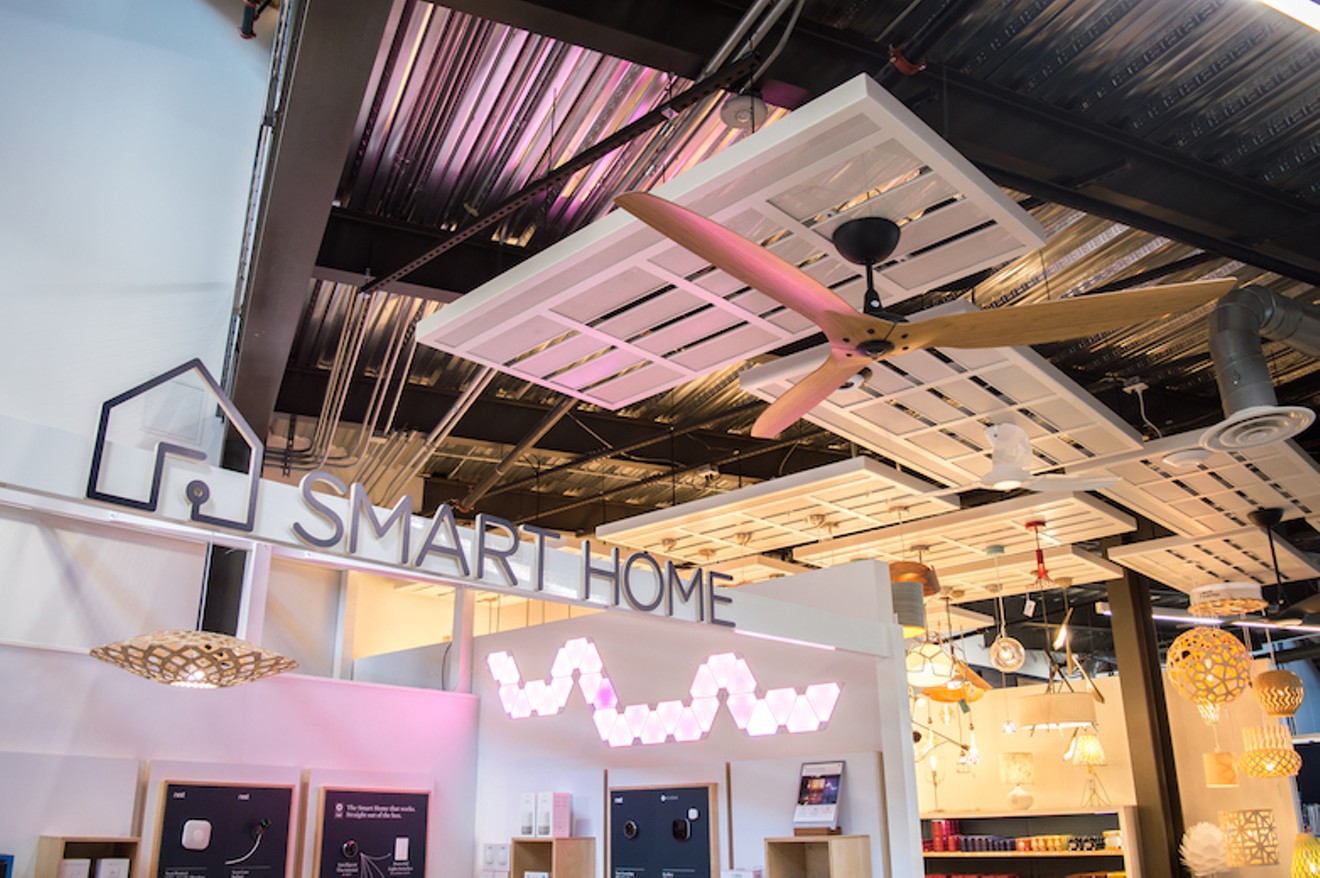The Hill, a 275,000-square-foot development at Walnut Hill and Central Expressway, just got its first business, and it's already breaking records. TreeHouse, a store that sells sustainable home improvements, is also Dallas' first energy-positive building.
TreeHouse has been dubbed the "Whole Foods of home improvement." The company's CEO and co-founder, Jason Ballard, says he loves the comparisons to the organic supermarket chain, minus the implication of excessive markups.
“We are allergic to becoming a luxury brand,” Ballard says.
The interior, filled with daylight, is bright and clean with wood and plant accents: part Sharper Image, part arboretum, complete with smart thermostats, Tesla batteries and a wall of live plants.
The mission statement painted on the wall reads: “We exist to make homes beautiful, healthy and sustainable. For everyone.”
A firm believer in practicing what he preaches, Ballard sought to sow the company’s vision directly into the walls of the new building. Built from the ground up, the store was designed to be “energy positive,” which means that on a normal day, TreeHouse produces more energy than it uses.
The foundation of TreeHouse’s energy positivity is its shape. Bedecked with 539 solar panels, the south-facing, saw-toothed roof is in the optimum position to generate the most solar energy possible while blocking the sun from directly entering the interior and creating more heat.
This means that even though the sun is the store’s primary source of illumination, the building does not absorb the extra heat from direct daylight. This provides the building with a small “thermal envelope,” reducing the need for energy-greedy air conditioning.
TreeHouse also sports a small fleet of enormous fans that make the interior feel cooler, further reducing the need for air conditioning.
When the Texas swelter inevitably makes AC necessary, TreeHouse uses a variable-refrigerant flow HVAC unit to efficiently manage the building’s temperature and energy consumption.
All of the sparingly placed lights in the store are LEDs that switch off after 15 minutes if no one is moving near them.
The final component of TreeHouse’s energy conservation is a twin set of industrial-sized Tesla Powerpacks. These gigantic batteries ensure that even on the darkest, nastiest day, the building will still achieve net-zero energy usage.
Ballard estimates that on sunny days, TreeHouse produces 30 percent to 40 percent more energy than it uses. That excess energy flows back into the Dallas grid. Ballard’s hope is that Dallasites will look to TreeHouse as a model for their own homes.
“We built the store like that not to toot our own horn but to create the imaginative space that if you can do it on a building this gigantic, you can do it on your house, too,” Ballard says. "This building is meant to help you imagine the possible.”
For Ballard, the greatest victories come from helping homeowners on a budget create healthy and sustainable homes while slashing their energy bills. He says someday soon solar panels and batteries, like the ones that power TreeHouse, will become as normal as dishwashers and refrigerators.
His advice for homeowners looking to take steps toward making their homes net zero or energy positive is to start by installing a smart thermostat and properly insulating their homes. He says these steps alone can reduce a small home’s electric bill by up to $100 per month.
Ballard's mission is to show Dallasites that the tools for a more sustainable home are within reach.
“This isn’t a TED Talk about what we might do one day; this is happening right now,” Ballard says.
[
{
"name": "Air - MediumRectangle - Inline Content - Mobile Display Size",
"component": "18855504",
"insertPoint": "2",
"requiredCountToDisplay": "2"
},{
"name": "Editor Picks",
"component": "17105533",
"insertPoint": "4",
"requiredCountToDisplay": "1"
},{
"name": "Inline Links",
"component": "18349797",
"insertPoint": "8th",
"startingPoint": 8,
"requiredCountToDisplay": "7",
"maxInsertions": 25
},{
"name": "Air - MediumRectangle - Combo - Inline Content",
"component": "17105532",
"insertPoint": "8th",
"startingPoint": 8,
"requiredCountToDisplay": "7",
"maxInsertions": 25
},{
"name": "Inline Links",
"component": "18349797",
"insertPoint": "8th",
"startingPoint": 12,
"requiredCountToDisplay": "11",
"maxInsertions": 25
},{
"name": "Air - Leaderboard Tower - Combo - Inline Content",
"component": "17105535",
"insertPoint": "8th",
"startingPoint": 12,
"requiredCountToDisplay": "11",
"maxInsertions": 25
}
]














